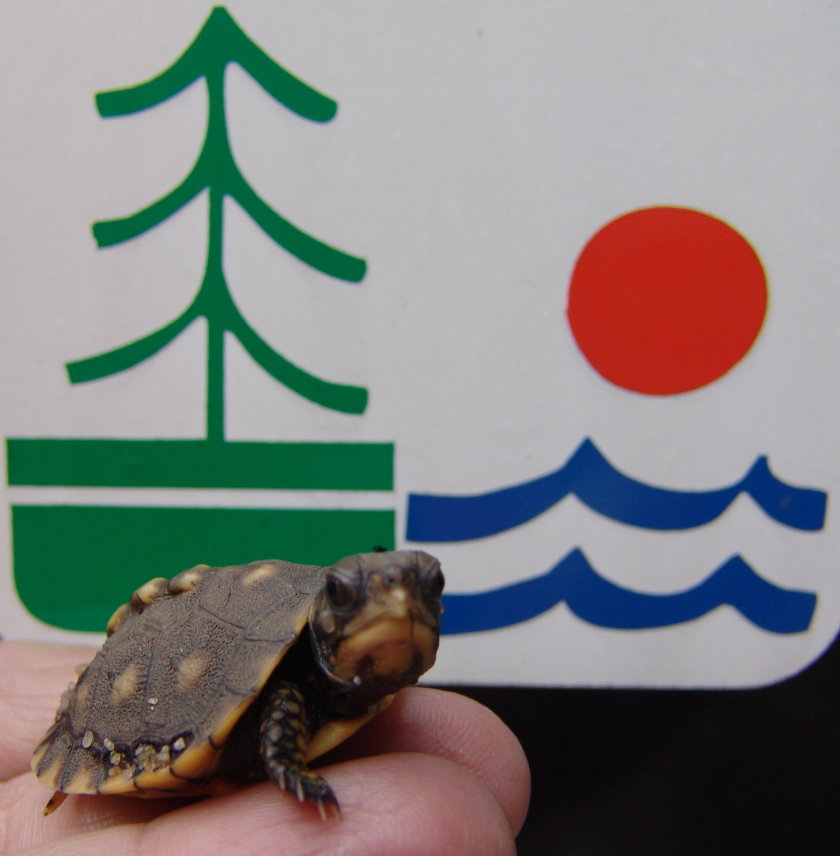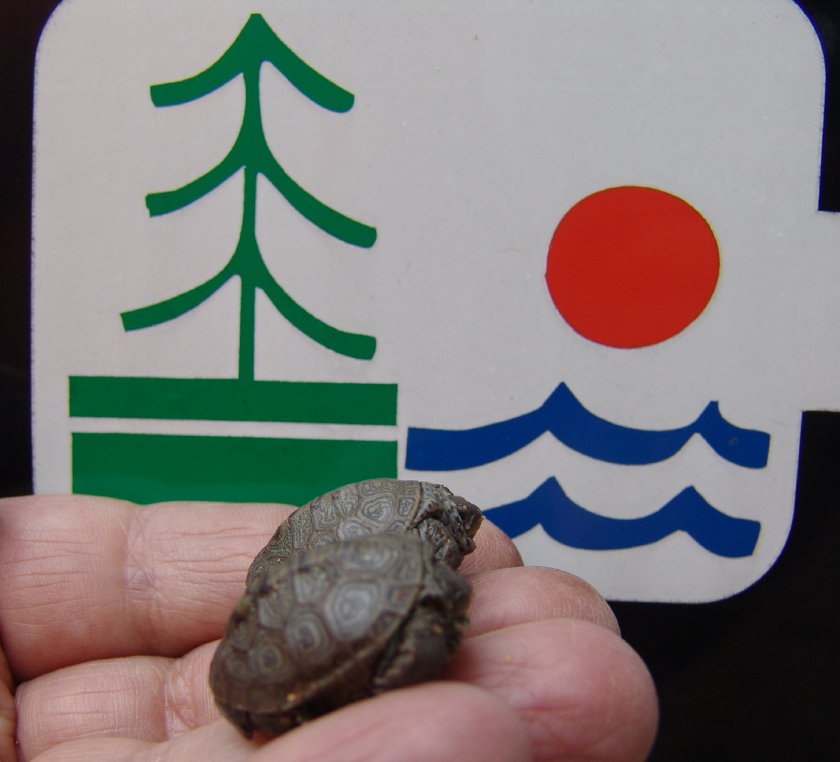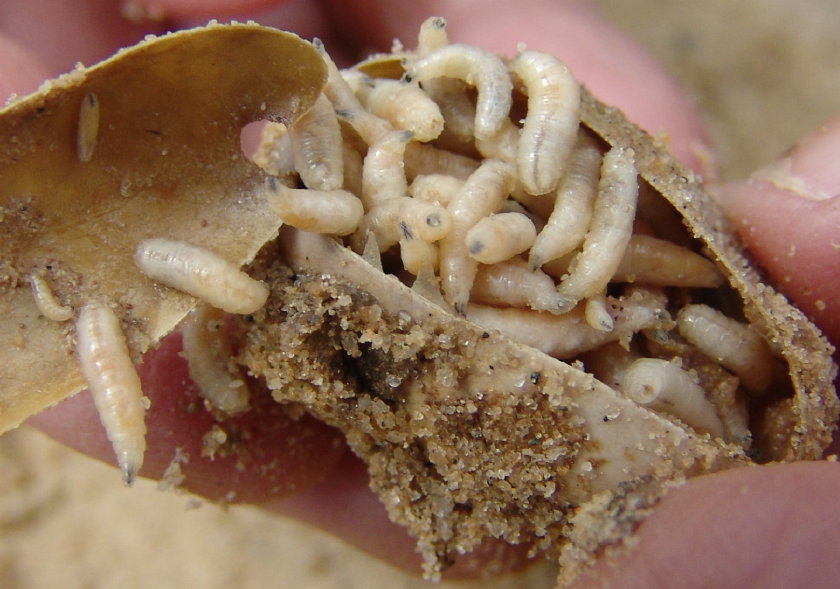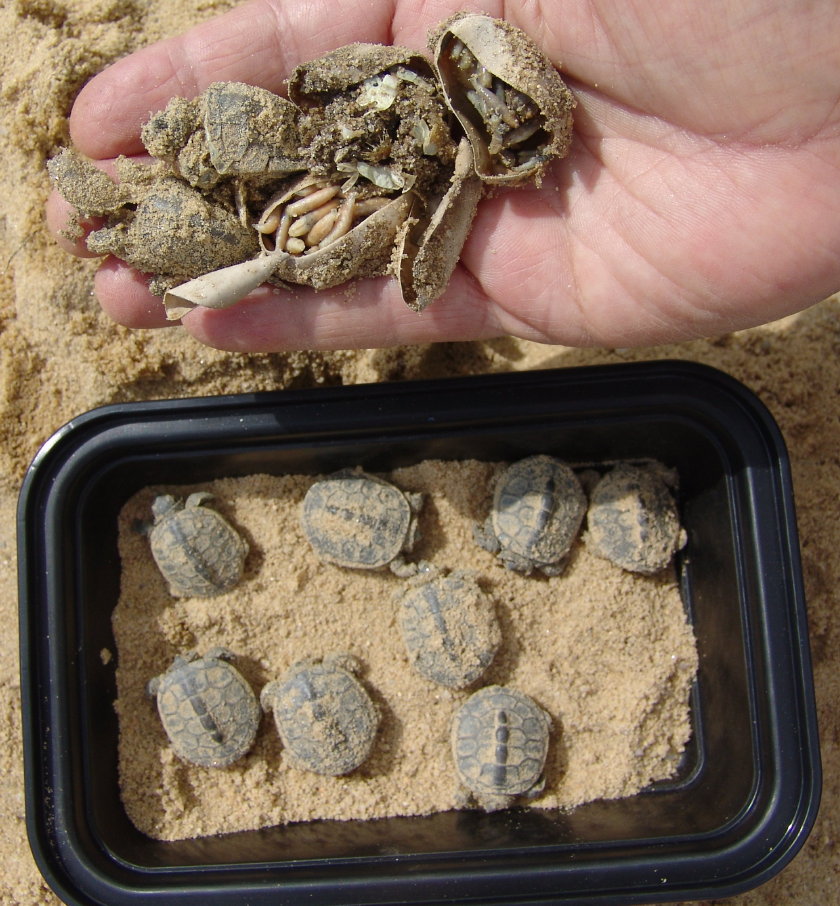The Fox Island Marsh Conservation Area lies in South Wellfleet and, along with its neighbor the Pilgrim Spring Woodlands Conservation Area, comprises 68 acres of woods and 100 acres of salt marsh. An exquisite parcel of these conservation lands is the Whale Bone Point Trail (see Google image below) described as the jewel in the crown for its unmatched overlook views of the Fox Island Marsh and Blackfish Creek. These lands are owned by the Town of Wellfleet and the Wellfleet Conservation Trust.
Whale Bone Point
This last week the Fox Island Conservation Area witnessed the arrival of babies from two Massachusetts protected species: diamondback terrapins (threatened) and Eastern box turtles (species of special concern). While the Whale Bone Point area had been assessed as box turtle habitat and the point has been documented as a terrapin nesting site, these are the very first babies of both species that have actually been discovered on the land as they were being born.  The conservationists, environmentalists and naturalists who worked to protect this precious habitat deserve two thumbs up, one for each of these listed species.
One of Four Eastern Box Turtle Hatchlings
Last week a resident abutting the Whale Bone Point area discovered four Eastern box turtle hatchlings in a nest in her mulched landscaping. That story was reported below under Eastern Box Turtle Hatchlings. These adorable babies were a bit disoriented, one might even say “grumpy,” at being so uncerimoniously disturbed from their post-natal snooze, and they were a little dehydrated, too. So, after a few days of turtle R&R, the foursome was released into the protected woodlands of Whale Bone Point near their nest site.
Release of Eastern Box Turtle Hatchlings
After releasing these box turtle hatchlings on Friday, we trekked down to the tip of Whale Bone Point where we had documented diamondback terrapin nesting since 2000 based on depredated nests and discarded egg shells. We discovered three emergence holes within about 12 inches of each other that contained the remnants of escaped hatchlings, undeveloped eggs and some eggs that had been destroyed by root and insect predation. In the middle nest, tucked under the lip and cradled in roots that had drained moisture from the nest and had contorted the embryos inside their egg shells within their nose-like grip, three pipped and cracked eggs remained.  One had not survived the attack, but two others were alive, albeit distorted, severely dehydrated and frozen in a trance-like stupor. The clip below documents our removal of one of these hatchlings from its egg cocoon; the babies were so weak that they couldn’t free themselves from the dried egg shell and dig themselves out of the nest.
Rescue of Terrapin Hatchling Trapped by Roots and Dehydration
You can see from the clip above how undersized these hatchlings are. The image below gives you a good sense of their actual size.
Undersized Terrapin Hatchlings
The good news: Terrapins (and most turtles, actually) are Timex critters. “They take a licking and keep on ticking.” Turtles are extremely resilient. Given a little TLC, even the most hapless turtle can be given a head-start toward survival. These two babies just need a few days of care before they, too, will join their siblings in the nursery salt marsh abutting the Fox Island Marsh Conservation Area. And in about eight years … Mark your calendar for June 15th, 2016 … they may be returning to Whale Bone Point to deposit their own nest of hatchlings. And so the cycle goes on. Save one turtle and your action ripples through the ages. Precisely like the “Time Machine” that Nature truly is.
Two Terrapin Hatchlings Released at Whale Bone Point






